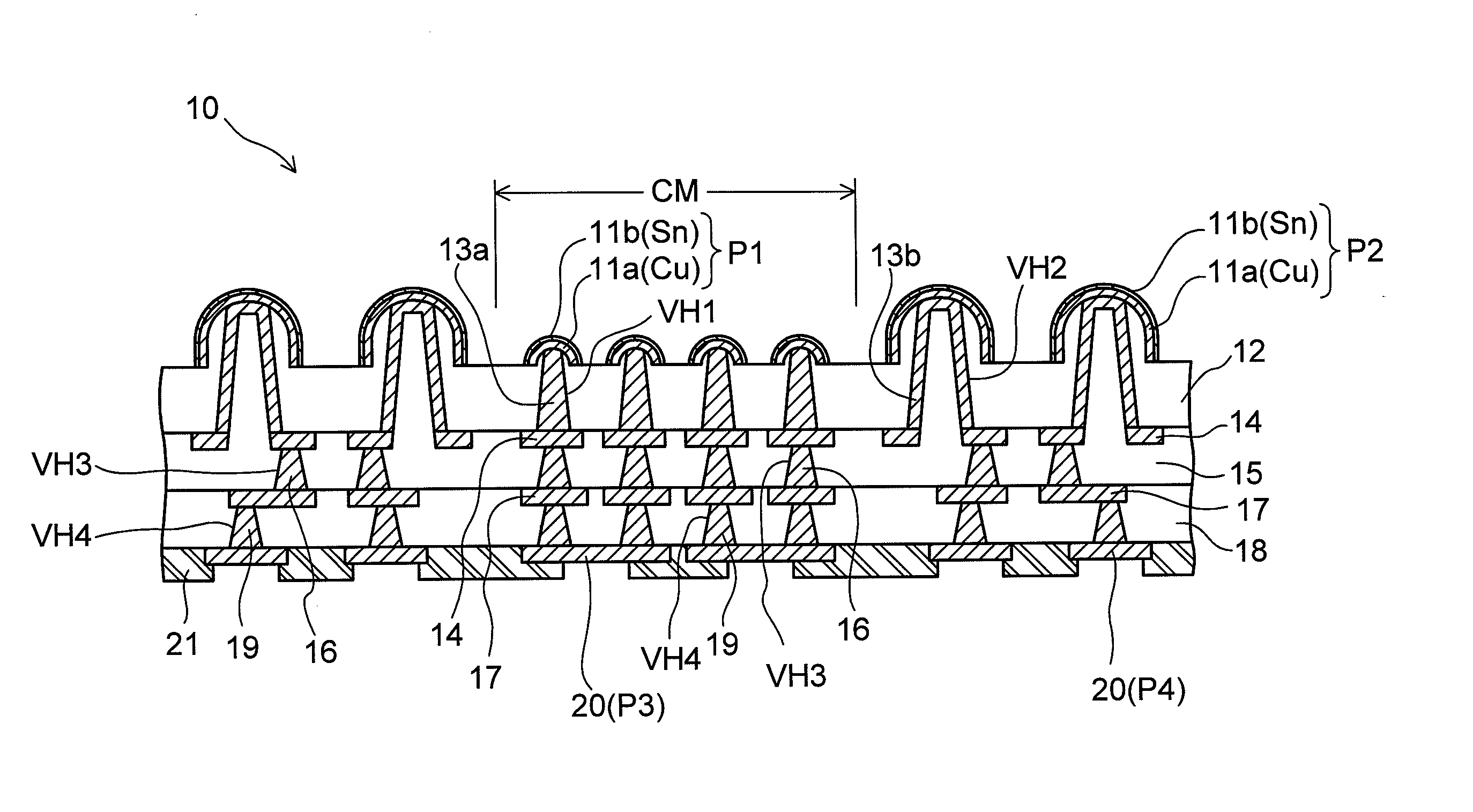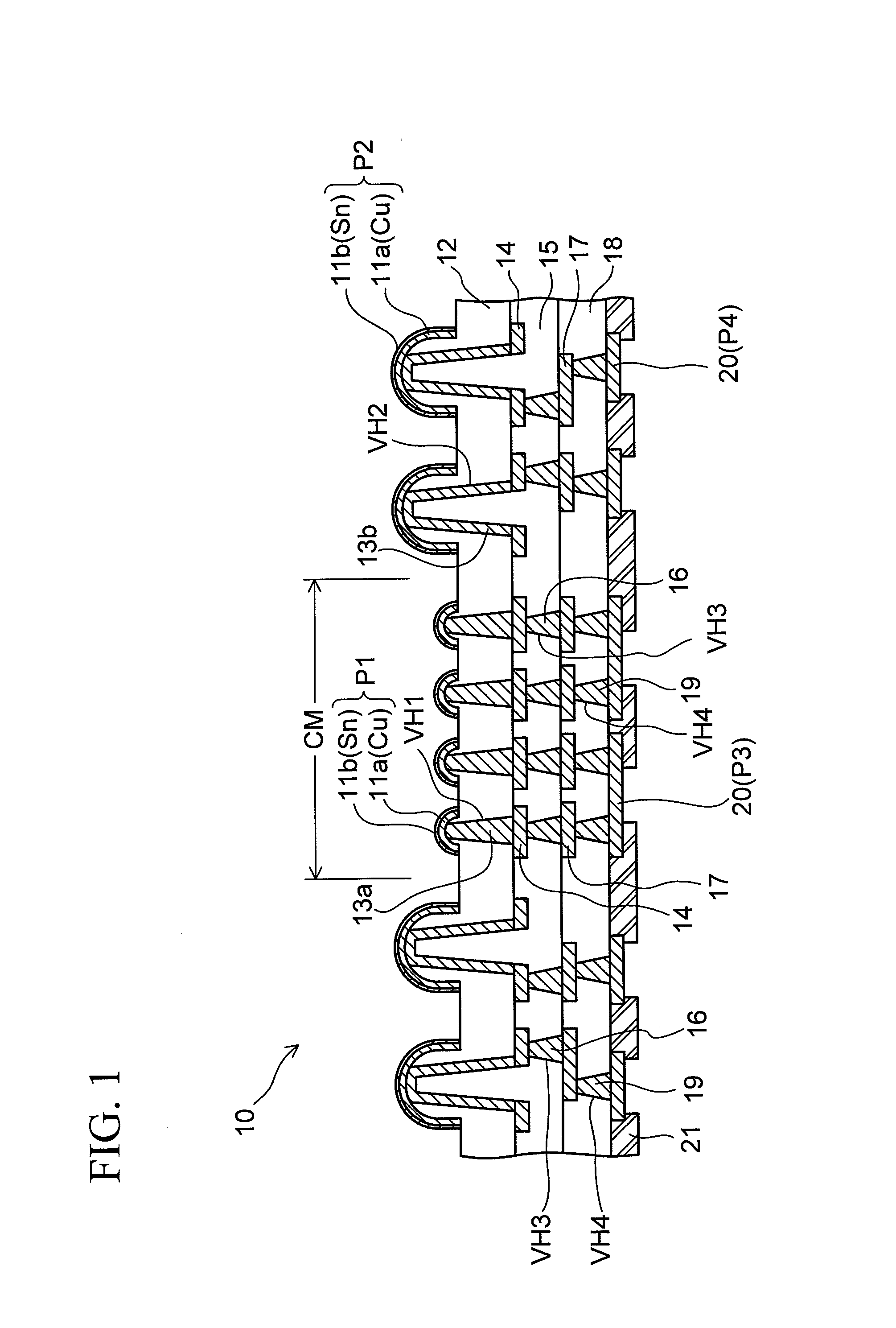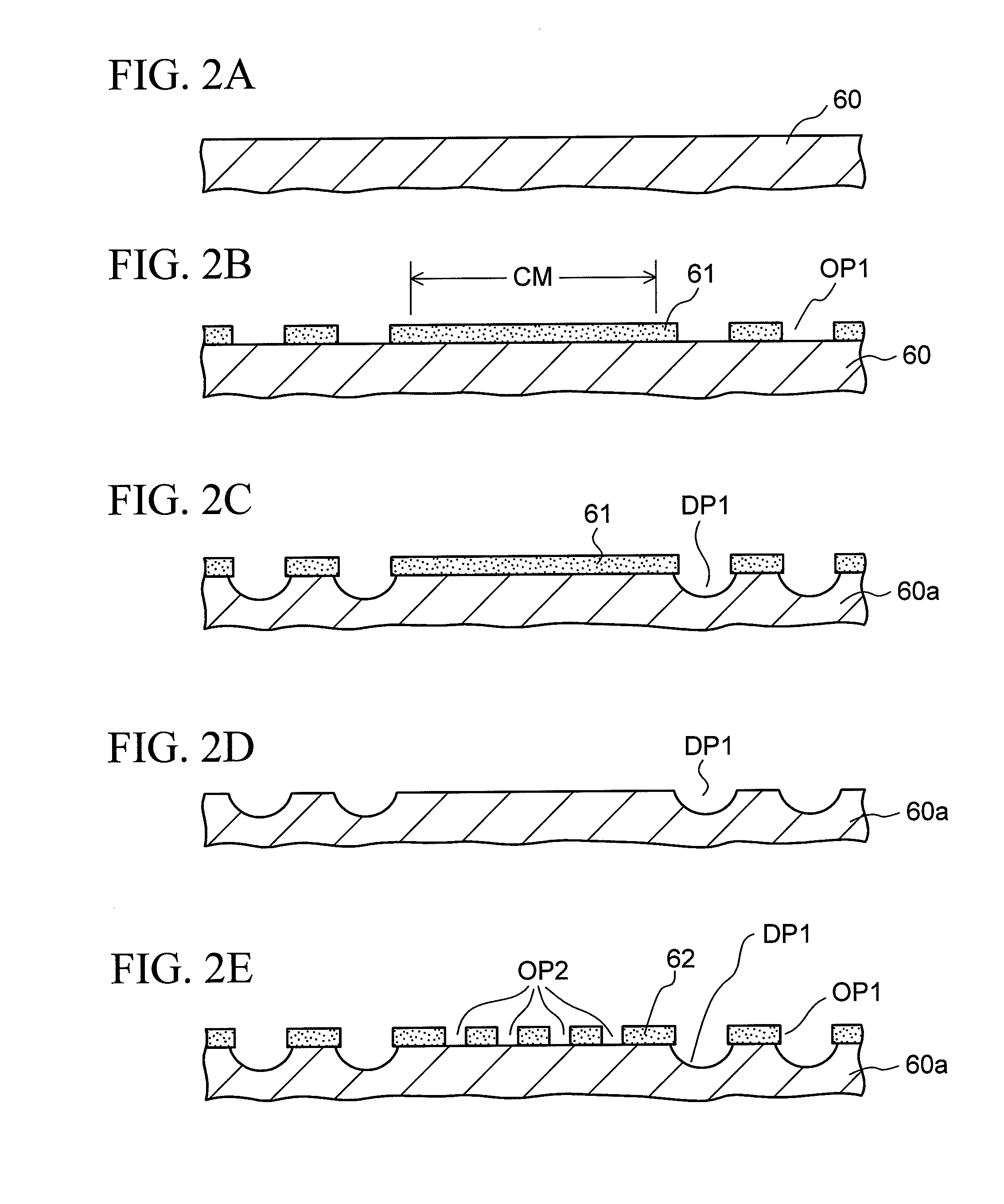Wiring board and method of manufacturing the same
- Summary
- Abstract
- Description
- Claims
- Application Information
AI Technical Summary
Benefits of technology
Problems solved by technology
Method used
Image
Examples
first embodiment
See FIGS. 1 to 7
[0032]FIG. 1 shows a configuration of a wiring board (semiconductor package) according to a first embodiment of the present invention, in the form of a cross-sectional view.
[0033]A wiring board (semiconductor package) 10 according to the present embodiment has a structure in which multiple wiring layers 14, 17 and 20 are stacked one on top of another with insulating layers (specifically, resin layers) 12, 15 and 18 interposed between corresponding wiring layers, as illustrated. In this structure, the wiring layers 14, 17 and 20 are connected via conductors (vias 13a and 13b, 16 and 19), respectively, filled into via holes VH1 and VH2, VH3 and VH4 each formed in a corresponding one of the insulating layers 12, 15 and 18. Specifically, the package 10 has the form of a “coreless substrate,” which does not include a support base member, and is different from a wiring board fabricated by using a general build-up process (in which a required number of build up layers are s...
second embodiment
See FIGS. 8 and 9
[0085]FIG. 8 shows a configuration of a wiring board (semiconductor package) according to a second embodiment of the present invention, in the form of a cross-sectional view.
[0086]As compared with the configuration of the wiring board 10 (FIG. 1) according to the first embodiment, a wiring board (semiconductor package) 10a according to the second embodiment is different in the following points. First, the surfaces of pads P5 arranged in the chip mounting area CM are formed at a position recessed from the surface of a resin layer 12a to an inner side of the board by a predetermined depth. Thereby, the recessed portions DP are formed at positions corresponding to the pads P5 on the rein layer 12a, respectively. Second, the pads P5 for mounting a chip and pads P6 for POP bonding arranged in the peripheral region around the pads P5 are both formed of a single metal layer (Cu layer). Since the other configuration of the wiring board 10a is basically the same as the confi...
third embodiment
See FIGS. 10 to 12c
[0096]FIG. 10 shows a configuration of a wiring board (semiconductor package) according to the third embodiment of the present invention, in the form of a cross-sectional view.
[0097]As compared with the configuration of the wiring board 10 (FIG. 1) according to the first embodiment, a wiring board (semiconductor package) 10b according to the third embodiment is different in the following points. First, each of pads P7 arranged in the chip mounting area CM has a structure in which multiple metal layers are stacked one on top of another (for example, a Cu layer, Ni layer and Au layer in the order from the lower layer side), and the surfaces of the pads P7 are exposed and flush with the surface of the resin layer 12b. Second, each of pads P8 for POP bonding arranged in the peripheral region around the chip mounting area CM is formed of a single metal layer (Cu layer). Since the other configuration of the wiring board 10b is basically the same as that of the wiring b...
PUM
 Login to View More
Login to View More Abstract
Description
Claims
Application Information
 Login to View More
Login to View More - R&D
- Intellectual Property
- Life Sciences
- Materials
- Tech Scout
- Unparalleled Data Quality
- Higher Quality Content
- 60% Fewer Hallucinations
Browse by: Latest US Patents, China's latest patents, Technical Efficacy Thesaurus, Application Domain, Technology Topic, Popular Technical Reports.
© 2025 PatSnap. All rights reserved.Legal|Privacy policy|Modern Slavery Act Transparency Statement|Sitemap|About US| Contact US: help@patsnap.com



